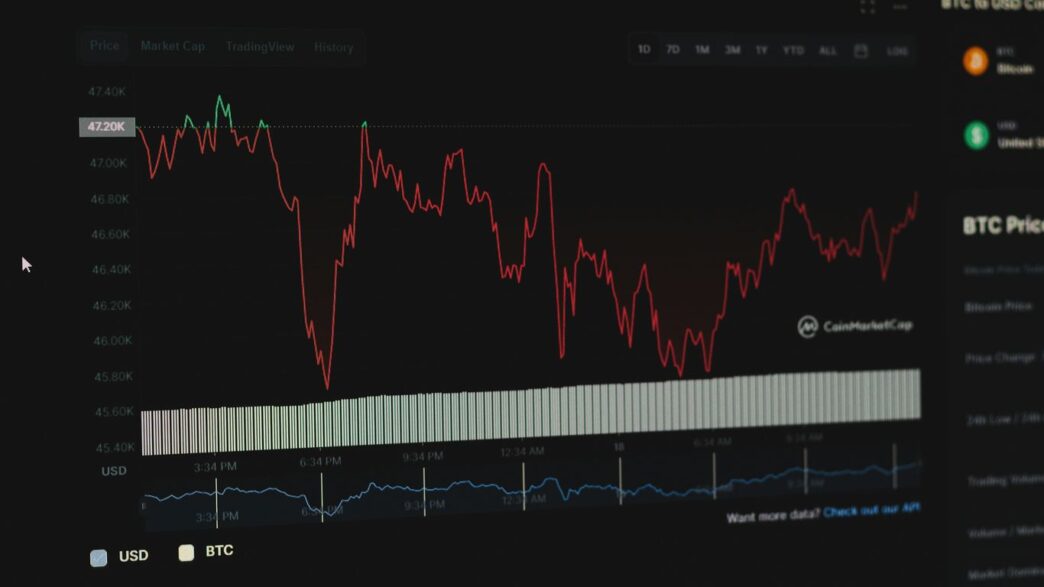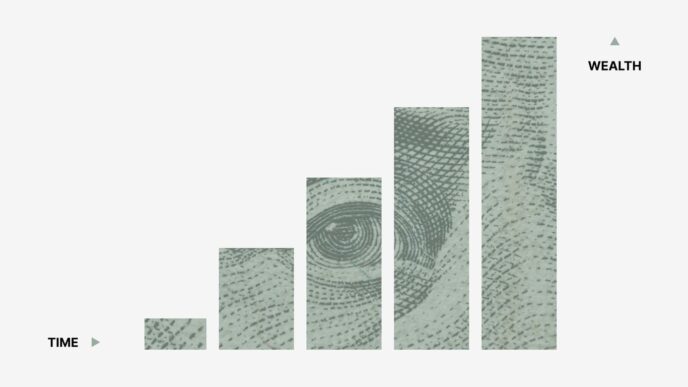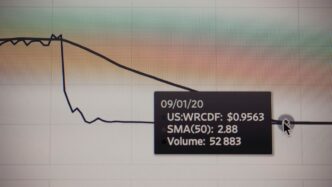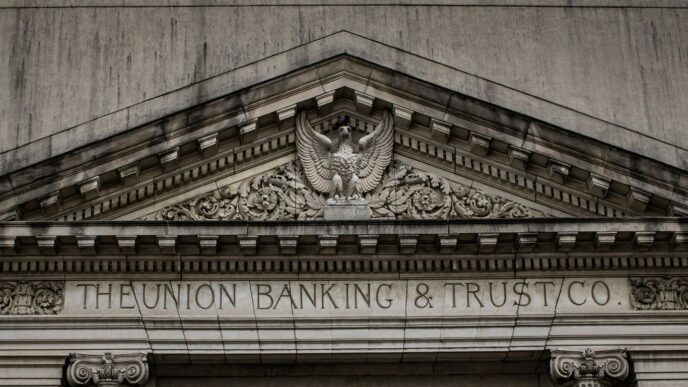Figuring out how much a company is really worth can feel like a puzzle. You see stock prices going up and down, and it’s hard to get a clear picture. That’s where market cap comes in. It’s a pretty straightforward way to gauge a company’s size and what the market thinks it’s worth. Think of it as a starting point for understanding a business’s value. We’ll break down what market cap is, how to calculate it, and why it matters for anyone looking to invest.
Key Takeaways
- Market cap is calculated by multiplying a company’s current share price by its total outstanding shares.
- It gives investors a basic idea of a company’s size and market value.
- Companies are often grouped into large-cap, mid-cap, and small-cap based on their market cap.
- Market cap is just one tool; it’s wise to look at other financial metrics too.
- Understanding market cap helps in making more informed investment choices and building a balanced portfolio.
Understanding Market Cap: The Foundation of Company Valuation
When you’re looking at companies to invest in, figuring out how much they’re worth is pretty important, right? It’s like trying to decide if a house is a good deal – you need to know its price and what you’re getting for your money. In the stock market world, one of the first things people look at is something called market capitalization, or market cap for short. It’s basically a way to get a quick idea of a company’s size and how the market sees its value.
Defining Market Capitalization
So, what exactly is market cap? Think of it as the total price tag for all of a company’s stock that’s available for trading. You figure it out by taking the current price of one share and multiplying it by the total number of shares the company has issued and are out there in the market. This number gives you a dollar amount that represents the market’s overall valuation of the company. It’s not the company’s actual bank account balance or its total assets, but rather what investors collectively believe the company is worth right now.
The Role of Market Cap in Investment Analysis
Why do investors care so much about market cap? Well, it helps them sort companies into different groups. You’ll often hear about large-cap, mid-cap, and small-cap companies. This categorization isn’t just for fun; it gives investors a general idea of the company’s stability and its potential for growth.
Here’s a simple breakdown:
- Large-Cap Companies: These are usually the big, well-established players. Think of companies with market caps often over $10 billion. They tend to be more stable but might grow a bit slower.
- Mid-Cap Companies: These fall somewhere in the middle, typically between $2 billion and $10 billion. They can offer a balance of stability and growth potential.
- Small-Cap Companies: These are the smaller companies, usually under $2 billion. They might have more room to grow quickly, but they can also be riskier.
Knowing these categories helps investors match companies to their own investment goals and how much risk they’re comfortable taking.
Market Cap as a Measure of Company Size
Market cap is really just a way to gauge how big a company is in the eyes of the stock market. A company with a huge market cap is generally seen as a larger, more significant business than one with a much smaller market cap. This size can influence how investors view its stability, its ability to weather economic storms, and its overall presence in its industry. It’s a starting point, a quick snapshot that helps you understand where a company fits in the bigger picture before you start digging into more detailed financial reports.
Calculating Market Cap: A Step-by-Step Approach
The Formula for Market Capitalization
Figuring out a company’s market cap is pretty straightforward. It’s basically the total value the stock market places on a company right now. To get this number, you just need two pieces of information: the current price of one share of the company’s stock and the total number of shares that are available for trading (these are called outstanding shares).
The formula is simple:
Market Cap = Current Share Price × Total Number of Outstanding Shares
Let’s say a company’s stock is trading at $50 per share, and there are 10 million shares out there. The market cap would be $50 multiplied by 10 million, which equals $500 million. That $500 million is what the market collectively thinks the company is worth, based on its stock price.
Illustrative Examples of Market Cap Calculation
To make this even clearer, let’s look at a couple of examples.
Example 1: A Small Tech Startup
- Company: Innovate Solutions Inc.
- Current Share Price: $15
- Outstanding Shares: 2,000,000
- Calculation: $15 × 2,000,000 = $30,000,000
- Market Cap: $30 million
This company would likely be considered a small-cap stock.
Example 2: A Well-Established Retailer
- Company: Global Goods Corp.
- Current Share Price: $120
- Outstanding Shares: 50,000,000
- Calculation: $120 × 50,000,000 = $6,000,000,000
- Market Cap: $6 billion
Global Goods Corp. would fall into the mid-cap or even large-cap category, depending on the specific definitions used.
Factors Influencing Market Cap Fluctuations
Market cap isn’t a static number; it changes all the time. Several things can cause it to go up or down:
- Stock Price Changes: This is the most direct influence. If the stock price rises, the market cap increases, and vice versa. Stock prices can move for many reasons, like company news, industry trends, or general market sentiment.
- Share Buybacks: When a company buys back its own shares from the market, the number of outstanding shares decreases. This can increase the market cap, even if the stock price stays the same, because the total value is now spread over fewer shares.
- New Share Issuances: Conversely, if a company issues new shares (perhaps to raise money or through employee stock options), the number of outstanding shares goes up. This can lower the market cap, assuming the stock price doesn’t rise enough to offset the increase in shares.
- Company Performance and News: Positive earnings reports, successful product launches, or favorable economic conditions can boost investor confidence, driving up the stock price and thus the market cap. Negative news, like poor financial results or regulatory issues, can have the opposite effect.
Categorizing Companies by Market Cap Size
So, you’ve got a handle on what market cap is and how to figure it out. That’s great! But not all companies are created equal in the eyes of the market. We often group them based on their market cap, and this helps investors figure out what kind of investment they might be getting into. Think of it like sorting tools – you wouldn’t use a tiny screwdriver for a giant bolt, right? It’s similar with companies.
The Significance of Large-Cap Companies
When a company’s market cap is over $10 billion, we usually call it a large-cap company. These are often the big players, the household names you see everywhere. Companies like Apple or Microsoft fall into this group. Because they’re so big and established, they tend to be pretty stable. They’ve usually got a solid history, lots of customers, and can handle economic bumps better than smaller outfits. For investors looking for a steadier ride, large-cap stocks are often a go-to. They might not shoot up in value overnight, but they can provide consistent returns over time and sometimes even pay out dividends, which is like getting a little bonus cash regularly. They’re often seen as the bedrock of a well-rounded investment plan.
Exploring Mid-Cap Investment Opportunities
Moving down a notch, we have mid-cap companies. These typically fall between $2 billion and $10 billion in market cap. They’re kind of the middle children of the stock market. They’re past the super-risky startup phase but haven’t quite reached the giant status of large-caps. This can be a sweet spot for investors. Mid-caps often have a good mix of stability and growth potential. They’re usually more established than small companies, with a clearer business plan and a decent customer base, but they still have room to grow and expand. They might not be as predictable as large-caps, but they’re generally less wild than small-caps. It’s a balance that many investors find appealing when they want a bit of both worlds. You can explore different market capitalization categories, from nano to mega-cap, to understand these distinctions [bb79].
Understanding the Potential of Small-Cap Stocks
Finally, we get to the small-cap companies. These are the ones with a market cap under $2 billion. Think of them as the up-and-comers. They’re often younger businesses, maybe in newer industries, and they have a lot of potential to grow big. Because they’re smaller, they can sometimes be quicker to change and adapt to new trends. However, this also means they can be more unpredictable. Their stock prices might jump around a lot more than large or mid-cap stocks. Investing in small-caps can be exciting because if you pick a winner, the returns can be huge. But you’ve got to be ready for the ups and downs, and it’s smart to do your homework. It’s not uncommon for these companies to face challenges getting funding or dealing with unexpected problems. Here’s a quick look at the general ranges:
- Large-Cap: Over $10 billion
- Mid-Cap: $2 billion to $10 billion
- Small-Cap: Under $2 billion
Remember, these numbers can shift, and different people might use slightly different ranges, but this gives you a good idea of how the market sorts them out.
Market Cap in Relation to Other Valuation Metrics
So, we’ve talked a lot about market cap, right? It’s like the headline number for a company’s size. But here’s the thing: it’s not the whole story. Think of it like judging a book by its cover – sometimes it gives you a clue, but you really need to read a few chapters to get the full picture. That’s where other ways of looking at a company’s value come in.
Market Cap Versus Enterprise Value
Market cap tells you what the market thinks the company’s stock is worth. It’s just the share price times the number of shares out there. Simple enough. But what about the company’s debt? Or the cash it has sitting around? Enterprise Value (EV) tries to account for that. It takes the market cap, adds in all the company’s debt, and then subtracts any cash and cash equivalents. Why bother? Because if a company has a lot of debt, it’s riskier, even if its market cap looks good. On the flip side, a company with tons of cash might be a better deal than its market cap suggests.
Here’s a quick look:
- Market Cap: Share Price x Outstanding Shares
- Enterprise Value: Market Cap + Total Debt – Cash & Cash Equivalents
EV gives you a more complete picture of what it would actually cost to buy the entire company, debt and all.
Distinguishing Market Cap from Book Value
Then there’s book value. This is basically what the company is worth on paper, according to its balance sheet. You take all its assets (things it owns) and subtract all its liabilities (what it owes). It’s like the net worth of the company if you were to liquidate everything. Market cap, on the other hand, is what the stock market thinks it’s worth, which can be way different. A company might have a huge market cap because investors expect it to grow like crazy, even if its current assets don’t add up to much. Or, a company could have a solid book value but a low market cap if the market isn’t excited about its future prospects.
The Limitations of Relying Solely on Market Cap
So, why can’t we just stick with market cap? Well, for starters, it doesn’t tell you anything about how much debt a company is carrying, which, as we saw with EV, is pretty important. It also doesn’t tell you about profitability or how efficiently the company is run. You could have two companies with the same market cap, but one might be drowning in debt and losing money, while the other is debt-free and printing cash. You also can’t really compare companies across different industries using just market cap. A $1 billion market cap in the tech world might be a small player, but in a more traditional industry, it could be a giant. It’s a good starting point, but it’s definitely not the finish line for your research.
Leveraging Market Cap for Investment Strategy
So, you’ve got a handle on what market cap is and how to figure it out. Now, how do you actually use this number to make smarter investment choices? It’s not just about knowing if a company is big or small; it’s about fitting that size into your own financial game plan.
Assessing Investment Potential with Market Cap
Think of market cap as a starting point. A company’s size, as shown by its market cap, can tell you a lot about its potential for growth and the kind of risks you might be taking on. For instance, smaller companies, often called small-caps, might have more room to grow quickly. They could be the next big thing, but they also come with more uncertainty. On the flip side, giant companies, the mega-caps, are usually pretty stable. They’re unlikely to double in value overnight, but they might offer steadier returns and sometimes pay dividends. Market cap helps you match a company’s size to your own comfort level with risk and your goals for how fast you want your money to grow. It’s a way to filter through the thousands of stocks out there and find ones that seem like a good fit for your personal investment style. For a basic understanding of how this metric helps, you can look at market capitalization.
Market Cap and Portfolio Diversification
Diversification is key to not putting all your eggs in one basket, right? Market cap plays a role here too. If your portfolio is stuffed with only big, established companies, you might be missing out on growth opportunities. Conversely, if it’s all small, unproven companies, you might be taking on too much risk. Spreading your investments across different market cap sizes – large, mid, and small – can help balance things out. This way, if one segment of the market is having a tough time, another might be doing well, smoothing out your overall returns. It’s about building a mix that can handle different economic conditions.
Analyzing Industry Trends Through Market Cap
Looking at market cap across an entire industry can be pretty revealing. You can see which companies are the dominant players just by their size. If you notice that the market caps of companies in a certain sector are growing rapidly, it might signal that the industry itself is expanding. You can also spot shifts in market share. Maybe a smaller company’s market cap is growing much faster than its larger competitors, suggesting it’s gaining ground. This kind of analysis helps you understand the competitive landscape and identify industries that are on the upswing or companies that are really making a mark.
Advanced Market Cap Concepts
So, we’ve covered the basics of market cap, how to calculate it, and how it helps us sort companies by size. But the story doesn’t end there. There are a few more nuanced ideas about market cap that can give you an even sharper picture of a company’s true value and how it operates.
Understanding Free-Float Market Capitalization
First up is free-float market capitalization. Think about all the shares a company has issued. Not all of them are actually available for regular investors to buy and sell on the stock market. Some shares are held by company insiders, like executives and founders, or by governments, and these are often restricted from trading. Free-float market cap focuses only on the shares that are actually trading freely in the public market. This gives a more realistic view of the company’s market value that’s influenced by supply and demand from everyday investors. It’s calculated by multiplying the current share price by only the number of freely traded shares, not the total number of shares outstanding.
The Impact of Stock Splits on Market Cap
Ever heard of a stock split? Companies do this to make their stock price seem more affordable to a wider range of investors. For example, a 2-for-1 stock split means that for every share you owned, you now have two. The share price typically gets cut in half. While the number of shares outstanding doubles, the price per share halves, so the total market cap should theoretically stay the same immediately after the split. However, sometimes splits can signal confidence from management, potentially influencing investor sentiment and, indirectly, the market cap over time. It’s something to keep an eye on.
Market Cap in Times of Economic Volatility
Economic ups and downs can really shake things up in the stock market, and market cap is no exception. During periods of high volatility, a company’s market cap can swing wildly. This is especially true for smaller companies, which might be more sensitive to economic shifts. Tracking how a company’s market cap changes during these turbulent times can offer clues about its resilience and how investors perceive its stability. For instance, if a company’s market cap drops significantly faster than its peers, it might indicate underlying issues. Conversely, a company whose market cap holds steady or even grows during a downturn might be seen as a safer bet. It’s also worth remembering that market cap is just one piece of the puzzle; looking at metrics like the Price-to-Earnings ratio can provide additional context.
Wrapping It Up
So, we’ve gone over what market cap is and how to figure it out. It’s basically the stock market’s way of saying how much a company is worth right now. Remember, it’s not the only number you should look at when deciding where to put your money. Think of it like checking the tire pressure on your car – it’s important, but you also need to look at the oil level, the brakes, and if you even have gas. Using market cap along with other financial info helps you get a clearer picture. Don’t just guess; do your homework. That way, you’re more likely to make smart choices with your investments.
Frequently Asked Questions
What exactly is market cap?
Think of market cap as the total price tag for a company on the stock market. It’s figured out by taking the price of one share of its stock and multiplying it by the total number of shares the company has given out.
Why should I care about a company’s market cap?
Market cap tells you how big a company is in the eyes of investors. It helps you understand if a company is a giant, a medium-sized player, or a small startup. This can give you clues about how risky an investment might be and how much it could grow.
How do you calculate market cap?
It’s pretty simple! Just find out the current price of one share of the company’s stock and multiply that by the total number of shares the company has available for people to buy and sell.
Are there different sizes of companies based on market cap?
Yes, definitely! Companies are usually grouped into large-cap (really big companies), mid-cap (medium-sized), and small-cap (smaller companies). Each group has its own potential for growth and risk.
Is market cap the only thing that matters when looking at a company’s value?
Not at all! Market cap is super important, but it’s just one piece of the puzzle. You also need to look at other things like how much debt a company has or how much its assets are worth on paper.
Can market cap change a lot?
Absolutely. Since market cap depends on the stock price, it can go up or down daily as the stock price changes. Things like company news or big economic events can also make it move.












